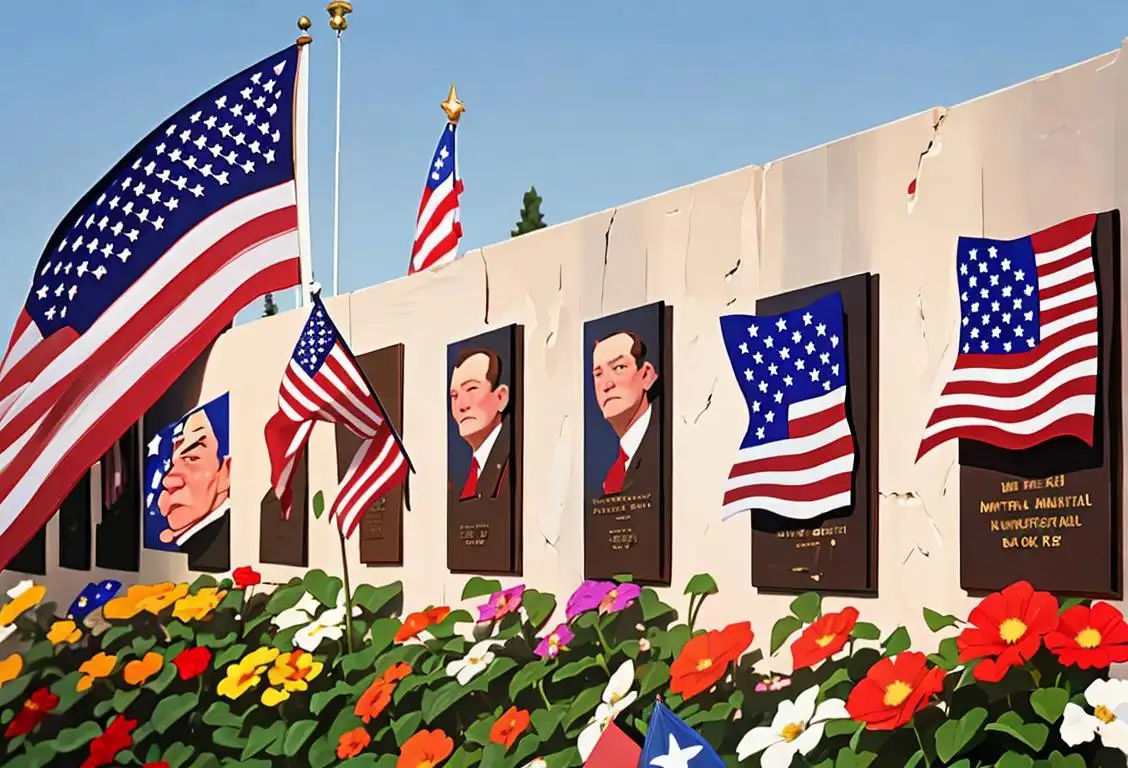National Kite Flying Day

Are you ready to let your dreams soar high in the sky? Well, get your kites out and your spirits up because it's National Kite Flying Day! Get ready to feel the wind in your hair and the thrill of watching your colorful creation dance among the clouds. It's a day to embrace the child within and let your imagination take flight. So grab your kite, gather your loved ones, and let's explore the exciting world of kite flying!
When is Kite Flying Day?
It's national kite flying day on the 8th February.
A Brief History of National Kite Flying Day
Every year on February 8th, people all around the world come together to celebrate National Kite Flying Day. But where did this whimsical holiday originate, you ask? Well, let me take you on a journey through the internet archives and uncover the fascinating internet history of this day.
The earliest mention of National Kite Flying Day can be traced back to 2007, when a group of passionate kite enthusiasts united to spread their love for this age-old pastime. They set up online forums, sharing their tips, tricks, and even some funny kite mishaps. The enthusiasm spread like wildfire, reaching every corner of the internet within months.
By 2010, social media platforms were buzzing with hashtags like #KiteFlyingDay and #LetsGoFlyAKite. People from all walks of life, from young children to retirees, started participating in kite flying competitions and organizing kite festivals in their communities.
The popularity of National Kite Flying Day continued to soar, and in 2015, the day was officially recognized by a popular online calendar, cementing its place in the digital history books. Today, millions of people across the globe eagerly await this special occasion to release their kites into the wild blue yonder.
With widespread internet access, the celebration of National Kite Flying Day has transformed into a virtual extravaganza. Enthusiasts share breathtaking kite photographs on social media platforms, host live kite flying sessions on video streaming platforms, and engage in friendly online competitions to see who can design the most impressive kite.
Whether you're a seasoned kite flyer or a first-timer, National Kite Flying Day is a chance to embrace the freedom of the open sky and experience the joy that comes from connecting with nature and your inner child.
Did You Know?
Did you know that the longest kite flight in history lasted for a staggering 180 hours? That's right! Over the course of a week, the determined flyer kept their kite airborne, battling wind gusts and braving the elements. Talk about a high-flying achievement!
History behind the term 'Kite Flying'
500 BCE
Ancient Origins
Kite flying dates back to ancient times, with its earliest documented origins dating back to 500 BCE in China. The Chinese are widely credited as the inventors of the kite. Initially, kites were used for military purposes, such as measuring distances, signaling, and lifting observers for surveillance.
100 BCE
Cultural Traditions
By 100 BCE, kite flying had found its place in Chinese culture beyond military use. Kites became popular among people of all ages, and flying kites became a cherished pastime. The designs and craftsmanship of kites started to evolve, incorporating various materials like silk, bamboo, and paper. Many kites were adorned with vibrant colors and intricate patterns, representing cultural symbols and mythical creatures.
751 CE
Spread to Other Cultures
During the Tang Dynasty, kite flying spread beyond China's borders. It is said that the Chinese armies used kites to frighten the Arabian forces during the Battle of Talas in 751 CE. The sound and sight of the kites unnerved the Arabian horses, providing an advantage to the Chinese. This event played a significant role in introducing kite flying to the Arab world.
1160 CE
Kite as Scientific Experiment
The Chinese scholar and inventor, Mozi, used kites for scientific experiments in 1160 CE. He flew a large kite with a copper wire attached to it during a thunderstorm. By observing the sparks generated when the kite's wire touched a power line, Mozi proved that lightning was a form of electricity. This experiment marked a crucial milestone in understanding the nature of electricity.
1750 CE
Kite as a Meteorological Tool
In the 18th century, Benjamin Franklin, a renowned American polymath, used kites to study lightning and weather patterns. In 1750, Franklin conducted his famous kite experiment, flying a kite equipped with a metal key during a thunderstorm. This experiment confirmed the relationship between lightning and electricity, paving the way for new scientific knowledge. Franklin's use of kites as meteorological tools helped advance the field of meteorology.
20th Century
Recreational Activity
During the 20th century, kite flying gained popularity as a recreational activity worldwide. Kite festivals, competitions, and exhibitions became common, celebrating the artistry and engineering behind kite designs. Countries like Japan, India, Afghanistan, and many others embraced kite flying as a cultural tradition, each with their unique styles and designs. Today, kite flying continues to captivate people of all ages and remains an engaging activity enjoyed around the globe.
Did you know?
Did you know that the longest kite flight in history lasted for a staggering 180 hours?Tagged
fun loved ones sportsFirst identified
8th February 2016Most mentioned on
8th February 2017Total mentions
1218Other days
Suicide Prevention Month Day
Happiness Day
Drink A Beer Day
Trivia Day
Cancer Survivors Day
Take A Hike Day
Memorial Day
Foundation Day
Bobblehead Day
Bowling Day









